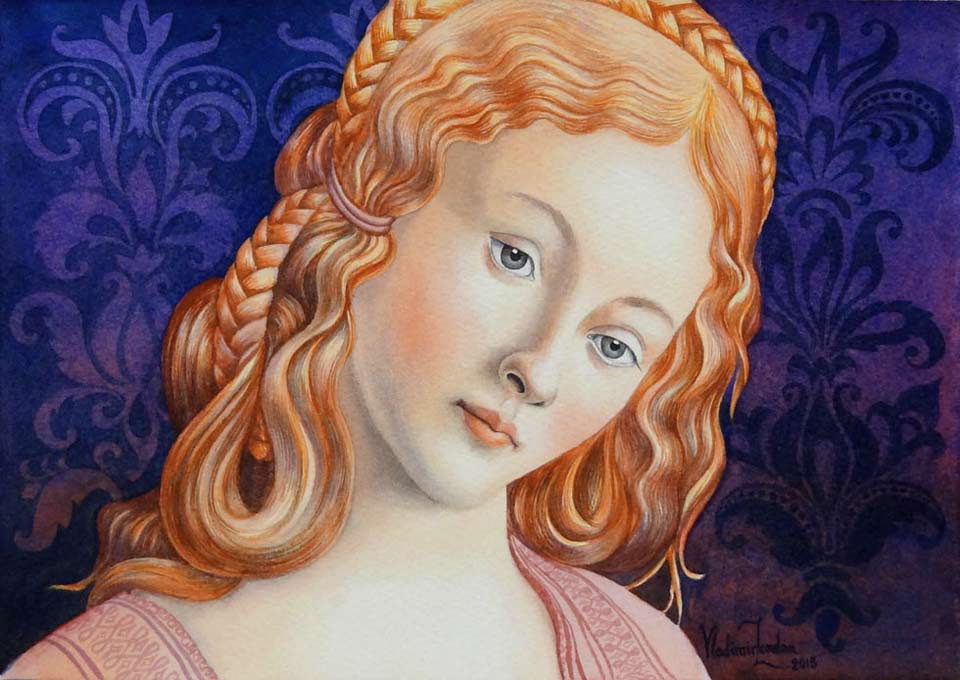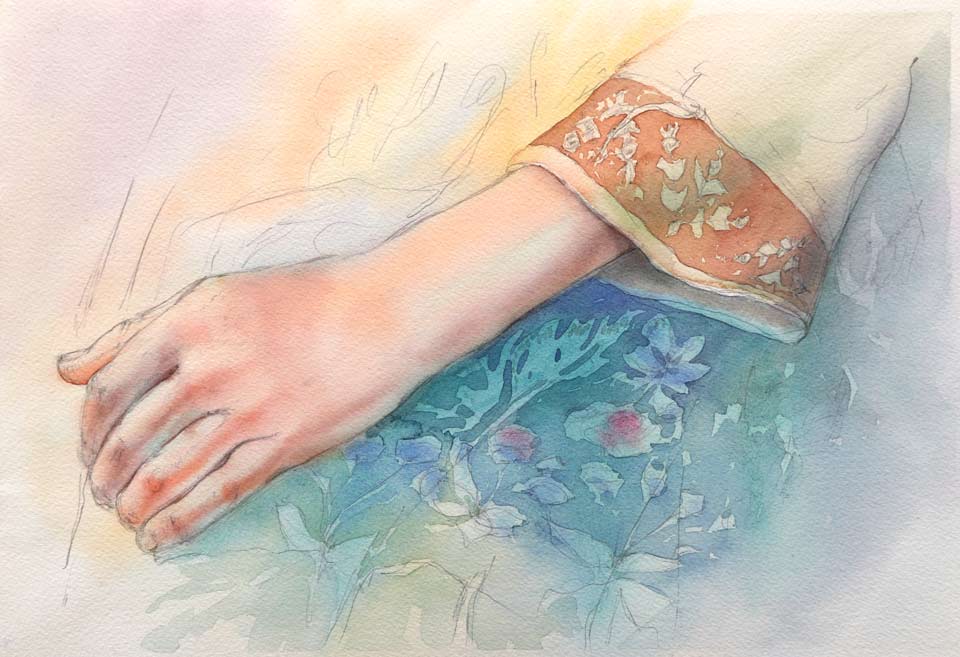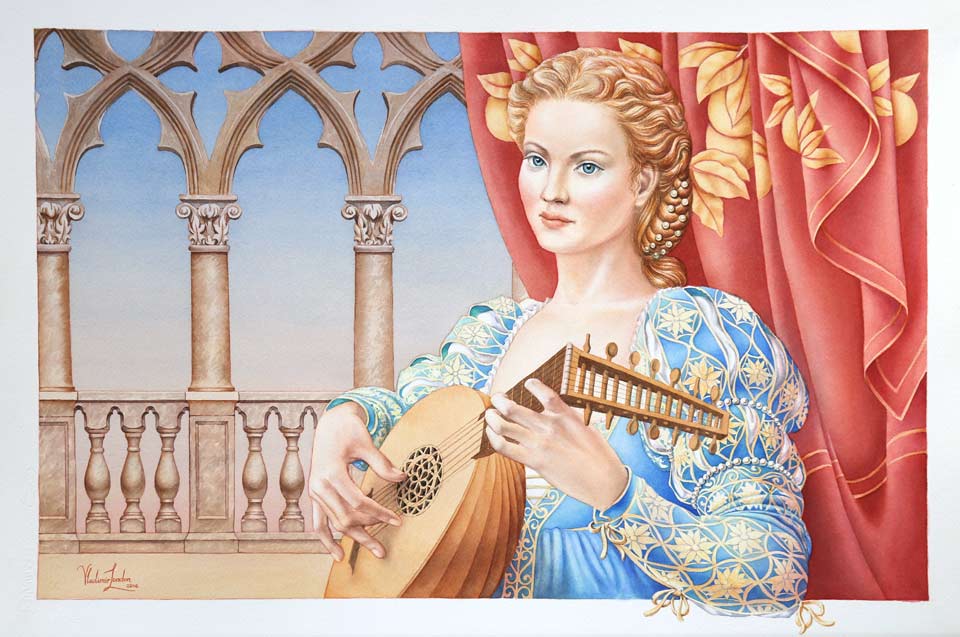Glazing in Watercolor Painting Technique
Article by Vladimir London, Watercolor Academy tutor
Glazing is painting in transparent layers of color-tints. It is the fundamental approach in watercolor.

Illustration by Vladimir London, Watercolor Academy tutor
By definition watercolor requires the transparency of layers and that is why learning and practicing glazing techniques is so important for every watercolor artist. A good knowledge of art materials will help you use this technique effectively.
Glazing is applied on top of paint layers, which act as an under-glazing. It is better to avoid using heavy pigment paints for under-glazing because they tend to look murkier. Also, the pigment particles of these paints have a weaker grip on the paper and can be washed out, mixing with the glazing layer and making it muddier.
Although all watercolor paints are transparent in tints, some paints are more suited for glazing than others. Transparent paints are the obvious choice because more layers can be added while the white paper remains visible.

Illustration by Vladimir London, Watercolor Academy tutor
The method of glazing application depends on the creative task. It can be a plain, gradated or variegated wash, for example. These washes can be applied on a dry surface as described above. Alternatively, the dry paper surface can be moistened with clean water using a flat brush or an atomizer. A glazing tint will spread more freely on moistened paper, creating softer edges to the boarders.
There are several primary purposes of glazing:
- To make the saturation of a color deeper
- To mute colors, making them less saturated
- To unite different colored areas with one undertone
- To make tonal values darker
To increase saturation, the same or similar colors are used in multiple glazing layers. Glazing with complementary colors will reduce saturation. With every additional layer of glazing, the tonal value will become darker so you need to plan ahead what color to use, how many layers of glazing to apply, and how transparent each layer should be.
A knowledge of optical color mixing plays an important role in selecting the colors to use.
The tonal value of a single wash and multiple glazing layers will be different. The first approach will give a flatter and more solid appearance, while second way will create an aerial perspective effects. The intensity of color will also differ in these two cases.

Illustration by Vladimir London, Watercolor Academy tutor
Optical mixing in the glazing layers will produce different hues depending on what color is on top. The color achieved with glazing will also be different from the color created by the mechanical mixing of the same paints.
You also need to keep in mind that it is better to apply the cold colors on top of the warmer hues. Cold colors reflect shorter wavelengths and these waves of light get more dispersed when reflected through top layers than the longer waves created by warmer colors. That is why the intensity of blue and violet hues will be muted to a greater degree if orange or red tints are applied on top than vice versa. I hope I didn't lose you there. Just in case, this is the rule once again: cold colors look better when layered if they're applied on top.
Glazing is a great technique when the differently colored areas of an artwork need to be visually united with one tint or undertone. For example, you might paint a building with a complex decoration, like a colored mosaic, and all the colors are competing for attention and separating the picture into an array of patches of colors. To unite these patches into one wall, you can apply one or two glazing layers on top. This will visually mute bright colors and bring them together into one decorative piece.
Another example is depicting the walls of a building in shadow. A building can have a complicated design of windows, decorations, and architectural details. On a sunny day, shadow will appear cold in color because the wall without direct sunshine will reflect the color of the blue sky. Instead of working to the full tonal depth of that wall, you can deepen it and add the cold tint by applying a glazing layer of a blue tint mix on top.
Many Watercolor Academy students have asked me; how many layers of glazing should be applied? It depends. The key is to keep white paper showing through even in the darkest places. When too many glazing layers block the light rays reflected by the paper, the artwork becomes dull and overworked. Needless to say, the number of dark and more opaque glazing layers should be kept to a minimum. In theory, hundreds of exceptionally light layers of an almost transparent tint can be added without affecting paper reflection. However, in practice, a certain economy of layers keeps an artwork fresh.
To learn how to paint in watercolor, enroll now
Watercolor Academy Online Course
A self-study, self-paced course where you can learn how to paint in watercolor by watching video lessons and doing assignments
- Unlimited access to 80 watercolor painting video lessons
- Lifetime membership without deadlines
- Unlimited support from the Academy tutors
- Constructive critique of your artworks
- Member access to the Academy's Art community
- Place in the Academy's Students Gallery
- Exclusive members-only newsletter and bonuses
- Watercolor Academy Diploma of Excellence in your name
One-time payment - Lifetime membership
$297 USD
ENROLL NOW
Personal Tutoring online + Online Course
One-to-one, unlimited and custom-tailored to your skills and needs Personal Tutoring by the Watercolor Academy teachers
- Everything in Online Course, plus:
- Dedicated team of art tutors
- Assessment of your current level of art skills
- Personalized curriculum tailored to your skills and goals
- Up to 100 art tasks with by-task assessment
- Unlimited one-to-one personal coaching with detailed per-task instructions and feedback
- Artwork critiques and results-oriented guidance
One-time payment - Lifetime membership
$997 USD
ENROLL NOW







